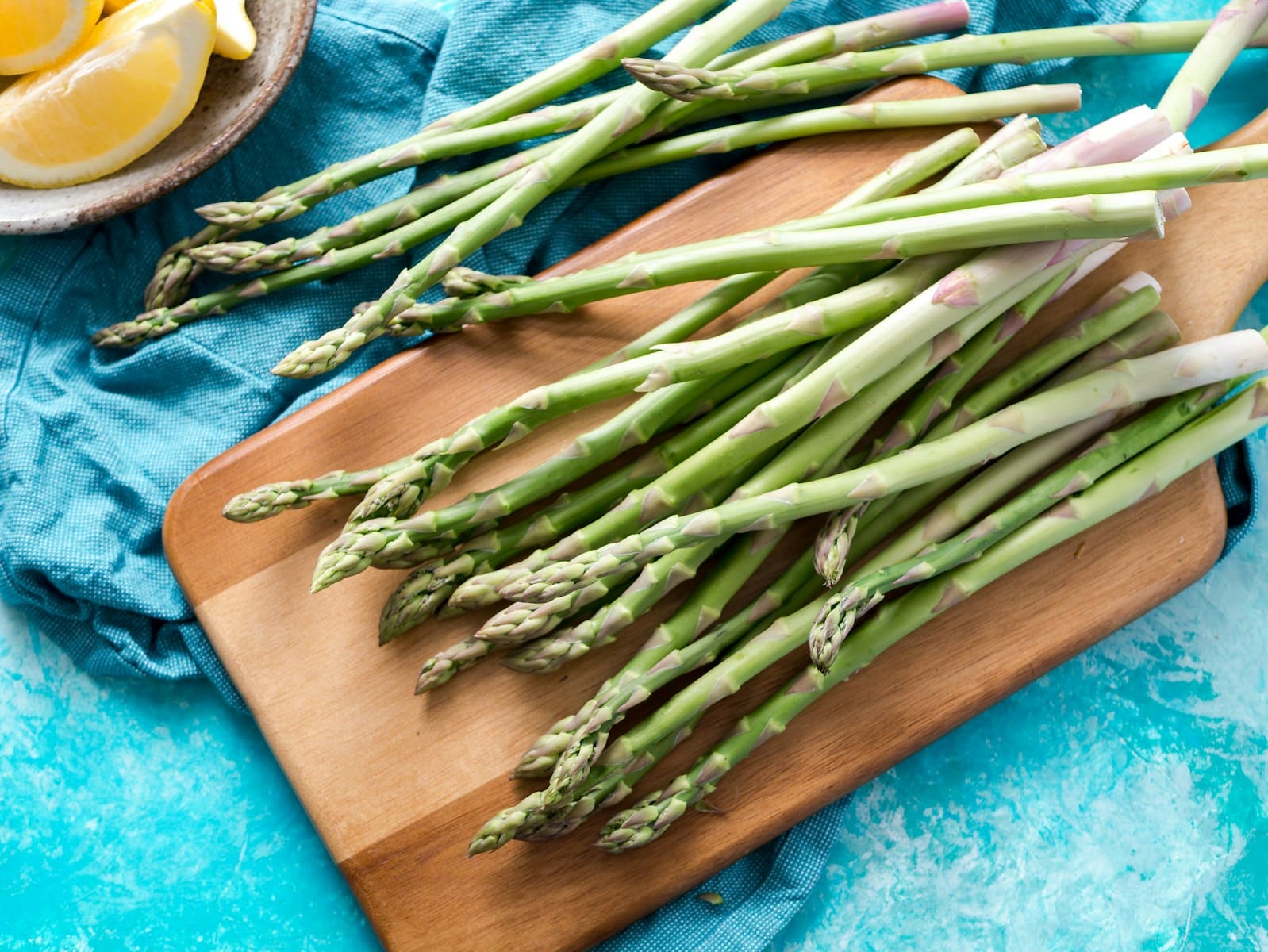Are you familiar with the expression “it’s just the tip of the iceberg”? That’s the best way to describe how much you probably knew about asparagus… until now.
It’s a fitting analogy, because the twig-like shoots we know as asparagus spears sprout from a large underground network of roots that twist, stretch, and grow year after year.
We decided to dig a little deeper around this metaphorical iceberg and discovered that asparagus is one peculiar spring vegetable.
1. Asparagus Is a Crazy Plant
Most vegetables we eat are grown from annual plants, meaning they’re replanted each year after harvest. But asparagus is a perennial—it comes back year after year. (Other edible perennials include artichokes and rhubarb.)
It takes three full years from seed before asparagus can be harvested. That’s a big investment for any farmer, especially since there’s no guarantee the plant will survive.
Luckily, once established, an asparagus plant can produce edible spears for more than 15 years. As soon as the ground thaws in early spring, the root system pushes up new spears—growing up to six inches per day!
Harvesting too much in one season can harm the plant’s future productivity, so careful, selective cutting is essential.
2. Massachusetts Used to Be the Asparagus Capital of America
The Pioneer Valley, home to many of Boston Organics’ farm partners, was once a major hub for asparagus farming. Hadley, MA in particular was famous for its high-quality asparagus, thanks to its rich, sandy soil.
But in the 1970s, a soil-borne fungus called Fusarium devastated the region’s asparagus crops. Because asparagus is a perennial, farmers couldn’t use crop rotation—one of the best organic defenses against disease.
As a result, there are no longer any commercial organic asparagus farms in central Massachusetts.
3. Asparagus Was a Weapon in the U.S. War on Drugs
Today, most U.S.-grown asparagus comes from California, Washington, and Michigan. But much of what you see in supermarkets is imported from Mexico or Peru.
This is partly due to NAFTA and rising U.S. water prices, but also the result of anti-drug policies. The U.S. once subsidized asparagus farming in Peru to steer farmers away from coca (used to make cocaine). The success of this initiative is debated, but it did lead companies like Del Monte to move operations to Peru for year-round access to cheaper asparagus.
4. Asparagus Isn’t Always Green
As with carrots, asparagus comes in different colors. Purple asparagus contains anthocyanins—the same antioxidants found in blueberries and eggplants.
White asparagus, prized by chefs, is actually the same plant as green asparagus. It’s grown under mulch or plastic to prevent photosynthesis. The result is tender, pale spears with a sweeter taste—but higher harvesting costs mean it’s also more expensive.
5. Asparagus Does Make Your Pee Smell
When your body digests asparagusic acid (unique to asparagus), it breaks it down into volatile sulfur compounds. These have a strong odor—similar to garlic, skunk spray, and other sulfur-rich substances.
Interestingly, asparagus itself doesn’t smell. The odor forms only after your body converts the acid. Some people detect the scent as soon as 15–30 minutes after eating.
However, not everyone can smell it. One study found that the ability to detect “asparagus pee” is linked to genetics—some people are simply hypersensitive to it.
6. Asparagus Is Really Good for You
Don’t let the funny smell stop you. Asparagus is a nutritional powerhouse. Just four spears provide 40% of your daily vitamin K needs—great for blood clotting and bone health.
It’s also rich in vitamin E, folate, vitamin C, and tryptophan. Low in calories, fat-free, and sodium-free, asparagus is a guilt-free springtime treat. And some say it may even help with hangovers!

